In the mid-twentieth century, doctors and biologists proved that constantly performing a certain set of movements in a special rhythm helps people not only get rid of diseases, but also improve their “fighting spirit.” This is how general therapeutic rhythms arose first, and then specialized rhythms, among which was speech therapy. A complex consisting of music, movements, and speech helps children speak smoothly and beautifully, and sometimes even helps them cope with the child’s stuttering problem.
Why are such exercises needed?
Human speech is a complex process that requires coordinated work nervous system, breathing, muscular apparatus in the oral cavity. If there is a violation in any component of this system, the entire mechanism, as a rule, falls apart. Logorhythmics helps strengthen these connections and achieve coordinated work in the speech process.
Also, speech therapy rhythm promotes the development of general and fine motor skills, speech breathing and coordination of movements, and also normalizes muscle tone. During logorhythmics classes, memory is trained, auditory perception and attention of children improves, which has a positive effect on physical condition helps the child develop correct movement skills.
In recent years, physiologists have noticed that regular speech therapy rhythm classes have a beneficial effect on the emotional and mental state of children. At the same time, children who are restless and easily excitable become calmer; slow and thoughtful children, on the contrary, become more active.
Who needs logorhythmics classes?
First of all, logorhythmics is needed:
- children with developed stuttering or a predisposition to it;
- children with speech that is too slow, fast or choppy;
- children with poorly developed coordination and motor skills;
- children who have been diagnosed with delayed speech development, dysarthria, and disturbances in the pronunciation of certain sounds;
- weakened and often ill children;
- children 3-4 years old who are going through a period of intensive speech formation.
Where to study with your child at home or in a group?

Logorhythmics classes can be organized in groups, at medical centers, children's clinics or kindergartens. Naturally, it will be easier for a child to learn with a group of peers, and he will have more opportunities to play and have fun in a group. However, it has been proven that individual training at home brings best results. At home, parents themselves determine what, how and when the child will do.
But this also has its own negative side, in a familiar environment, a child may refuse to complete tasks, and parents often do not have enough teaching experience to get the child to study. And yet, many adherents of the idea of logorhythmics are sure that it is better to start practicing logorhythmics at home. The child can learn to listen to music and master basic movements in a calm environment. After this, he can already be sent to a group with a professional teacher.
Exercises and rules on how to exercise with a child
A feature of any rhythm, not excluding speech therapy, is the unique simplicity of the technique. Any of the existing tasks can be performed without any problems by a person who does not have special training.
- Each exercise is based on imitation: the child repeats what the adult shows. There is no need to memorize all the speech material. This gradually comes on its own, from one activity to another. At the beginning, the text is read by an adult; at this time, the child is only encouraged to repeat. Subsequently, the child also gets involved in reading. When he can repeat all the phrases in the correct rhythm without errors, you can give the reins of power into his hands.
- Logorhythmics classes should not be held more than twice a week. The optimal time for them is the second half of the day. Don't expect anything from classes quick effect, the results will become noticeable only after six months, and in some children even after a year. Children who stutter need to study more often, up to four times a week.
- During classes, the child must be involved so that he is interested. To do this, you can use different pictures, favorite toys, bright clothes and any objects that bring joy to your child.
- All exercises must be repeated many times in each lesson until the child masters them completely. If some exercise is not amenable to your baby, then it is better to give it up for a while and then return to it again.
- Any logorhythmics exercise is impossible without music. It is necessary to select melodies for each type of activity. Slow and calm exercises are good to perform to the music of a waltz. The waltz from the ballet “The Nutcracker” is perfect. For more active exercises, marches are suitable, and for the most rhythmic exercises, you can use, for example, “Flight of the Bumblebee.” You can also prepare children's songs and recordings with sounds of nature.
- Classes should have a flexible structure and adapt to each child. When something doesn’t quite work out, you need to simplify the task or break it into several parts. If you notice that your child is having difficulty with fine motor skills or sound pronunciation, you can increase the number of appropriate exercises. Experiment without fear. The main thing when performing exercises is to maintain the unity of music, speech and movement. In all other respects, the flight of your imagination is not limited.
- There is no need to be upset, let alone angry, when your child doesn’t do everything the way you want. If the child feels your dissatisfaction, he will withdraw and may refuse to do the exercises. You need to be patient and continue what you started, even if you yourself do not believe in your child’s success.
From 0 to 2.5 years
Logorhythmics classes can be started from early childhood. Until the age of two, the child will engage in passive activities. Mom can simply read rhymes and sing songs to her baby, while beating a rhythm with her palms. Later baby He will already be able to perform some exercises, clap to the beat of poetry, raise his hands when he hears a certain word.
From 2.5 to 4 years
At this time, the child improves his motor skills, he learns to communicate and speak - this is what needs to be done during logorhythmics lessons. Important! If your child can still speak in complete sentences, you can allow him to repeat after you the last words of spoken phrases or just the endings of words.
Video: lesson on logorhythmics in kindergarten.
Various speech development problems occur in many modern children. In order for the child to avoid discomfort in later life, parents are advised to early age engage in improving and staging his speech. For this purpose, teachers and doctors use logorhythmics for children - an integrated method for the development of speech, hearing and coordination skills.
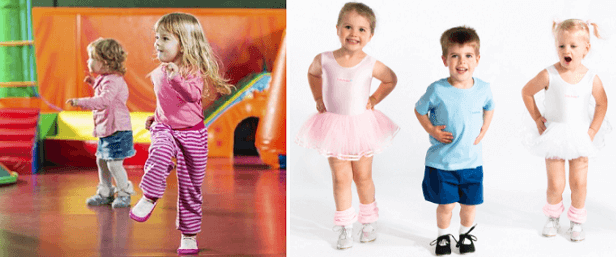
Logorhythmics is a method of working with children in game form in correctional pedagogy, in which motor, verbal and musical elements are comprehensively used. It allows you to improve according to the age norm:
- Auditory and visual analyzers;
- General coordination of movements, as well as fine motor skills;
- The process of breathing and using the apparatus for articulation;
- Mental activity of children (attentiveness develops, memorization and analytical thinking improve);
- Ability to relax and control body muscles.
What kids can't do without logorhythmics?
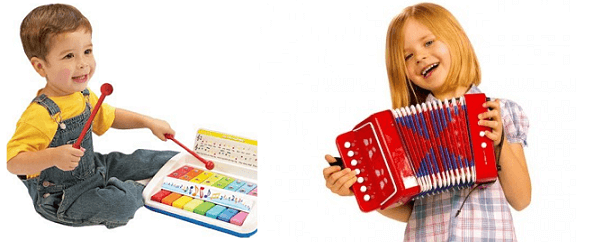
- People who stutter;
- Having problems with speech rate;
- Having problems with spatial orientation and mastering motor skills;
- Suffering from dysarthria, or diagnosed with mental retardation;
Logorhythmics tools include:
- Poetry;
- Games;
- Exercises.
Thanks to exciting lessons, children with the help of speech therapists have the opportunity to learn better the world around us. This is especially true for children 2-3 years old.
Vegetables and fruits
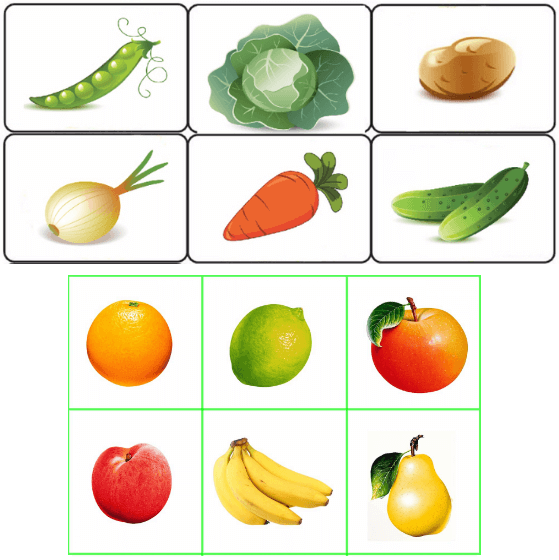
With the help of logorhythmics, when children go to speech therapy garden or come to a club class, they can easily learn what vegetables grow in the garden and what benefits they bring to people. For example, here is the following rhyme (it is recommended to prepare cabbage salad with your baby in advance):
Together we chopped the cabbage, chopped it!
(Arms bent at the elbows, palms folded like a spatula - the child moves each hand in front of him down and up in turn)
Together we salted the cabbage, salted it!
(Arms bent at the elbows, the child collects his fingers with a pinch and moves them as if he were salting something)
Together we grated the cabbage gloriously!
(Arms bent at the elbows, the child clenches his fists and rubs one against the other)
Together we squeezed the cabbage gloriously!
(Arms bent at the elbows, the child clenches his fists and, alternating right and left hand, straightens his fingers and clenches them into a fist again)
We are so smart - we cooked cabbage!
How many beautiful flowers grow in the garden between the trees! A song will help you recognize and remember them:
These scarlet flowers
(The child bends his arms at the elbows, lifts them above his head, puts his palms together, showing a “bucket”)
Everyone opened their petals
(Children spread their fingers to the sides)
The breeze flies easily -
The petals are swaying.
(Kids move their fingers quickly)
These scarlet flowers
Suddenly the petals closed.
(Palms are again connected in the form of a “bucket”)
They began to pump buds,
(The hands are brought together, the children swing them left and right)
And they fell asleep and didn’t want to wake up.
(The little ones place their palms together on their cheeks to show that they are sleeping)
Charging complexes 2-3 years. Children's gymnastics
Animals
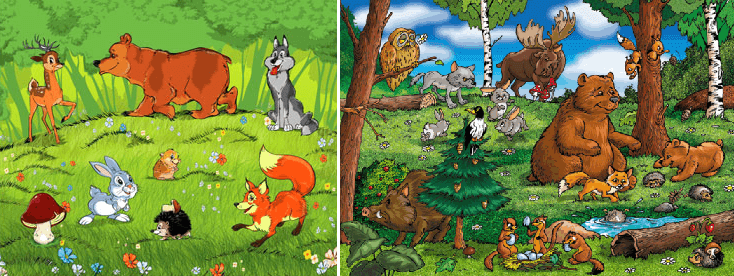
The fauna is no less diverse. How many animals, birds and insects can be found in the forest - logarithmics for kids will help you get to know them.
The first ones we meet on the way are dancer beetles:
Two beetles in the clearing
(Children dance, hands on belts)
Danced hopaka:
Right foot stomp, stomp!
(Stomp with right foot)
Left foot stomp, stomp!
(Stamp with left foot)
Hands up, up, up!
(Stand on tiptoes, stretch up)
Who will rise the highest?
You can't do without a story about a bear:
The bear wanders through the forest, clumsily,
And in the den in winter he sucks his paw.
(Children walk on the outside of their feet, waddling from one foot to the other)
In the summer he collects pine cones, and when he’s lucky -
He composes ditties and then sings them.
(Squats, kids collect pine cones)
One bump hit the bear right on the forehead -
He got terribly angry, and with his paws - stomp!
(stomping feet)
Logorhythmics lessons will help children aged 2-3 years learn about the hare:
A little gray bunny is sitting,
(Children squat like bunnies)
Ears are white in winter -
He moves them quickly and quickly.
Only this way, only this way!
(Show ears with palms and move them)
The bunny stayed too long for something,
He was cold, but he got warm,
He patted his paws - once, twice -
Well done, he is our hero.
Clap-clap-clap!
(Children applaud)
To keep your feet from freezing,
He jumped along the path.
Smart bunny!
Jump, jump, jump!
(They jump up while standing on the new clothes)
Logorhythmics according to the method of Ekaterina Zheleznova
Logorhythmics for preschoolers will be especially effective if you use Ekaterina Zheleznova’s methodology when conducting classes.
Musical logorhythmics is aimed at developing children's sound perception, clear speech skills, improving motor coordination and improving mental properties. The final results can be judged in six months to a year.
Games

Logorhythmic elements are actively used in the following games:
- "Wind and Trees"
- A strong, strong wind blew (children wave their palms in front of them);
- The trees were shaken and bent to the ground (arms above their heads, children swing them above their heads, and at the same time bend to the right and left);
- The wind is tired and falls asleep (hands fall down);
- And the trees—that’s how big they have grown! (Children raise their hands up again and stand on their toes.)
- "Postman"
- A sound is heard: knocking and knocking! (They hit the tables with their fists);
- Who is doing “Knock-knock” there? (Applause);
- “It's the postman! I’ll give you the mail” (They make a movement as if they are opening a door);
- “Come and visit, you are very welcome!” (Repeat three claps).
Exercises
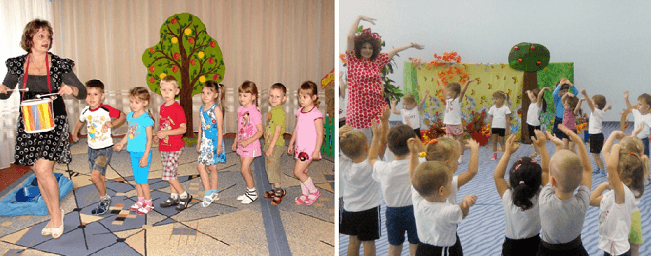
The physical development of a child at 2-3 years old is an important part of the educational process, therefore gymnastics with elements of logorhythmics is used by the teacher at every meeting with children.
There are various exercises: (logorhythmics according to the Zheleznova system):
- "Walk in the Woods"
We walked along the path - once, twice, and three times.
(Children march one after another)
The path leads us among leaves and grass,
We boldly step forward, raising our heads.
(Children walk single file)
We saw the stones
They began to jump over them.
(Jump and move forward)
There is a stream in front of us, let's get to it quickly.
Let's spread our arms to the sides and boldly cross the river.
(Straight arms spread to the sides, walking on tiptoes)
I see the autumn forest around me, my friend and I are running through it!
(Children run, form a circle)
- "Chicks in the Nest" (Finger Game)
The bird flaps its wings and flies into the nest.
(Cover the fingers of the left hand with the right palm and move them)
He will tell the chicks the news where he collects food for them.
(Same for the right hand)
- “Little frogs” (massage movements)
You can do these logorhythmic exercises at home with the help of your parents.
Our little frogs woke up in the morning -
They smiled, stood up, and stretched.
They arched their backs and sighed a little.
They clapped their hands and stamped their heels.
We tapped our hands on our arms a little,
Then they touched my chest and smiled again.
Pop and pop, noise and din, now we knock on the sides.
Our feet clapped our hands again.
Now the palms stroke the back, arms, legs.
The frogs jump once and twice, saying “Kva-kva-kva!”
- "Walking in the Rain"
Techniques of modern logorhythmics are used in outdoor games (integrated technology).
Plays first theme song, children walk around the hall.
The second theme song plays and the children do an impromptu dance.
When the third musical theme plays, the teacher loudly says “It’s starting to rain!” and opens a large umbrella over his head. All the kids should have time to hide under it.
Exercises and rules on how to exercise with a child
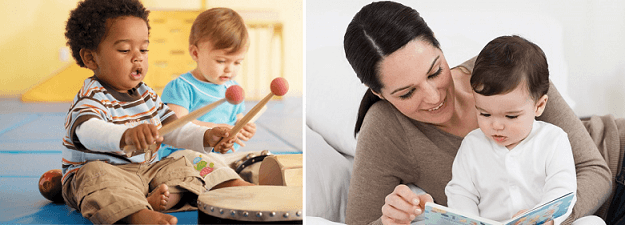
Not all children are suited to work in a team. How can parents work with their child so that Ekaterina Zheleznova’s logorhythmics benefits him?
- A child of two or three years old remembers poems and movements through repetition. Initially, he imitates an adult, repeating after him;
- Classes should be conducted twice every seven days in the late afternoon (for stuttering - three to four times every seven days);
- The baby should be in a comfortable environment (use your favorite toys so that the lesson is like a fun game for him);
- Every exercise needs repetition;
- Music is selected individually;
- Modify poems and games to suit the needs of a particular child;
- If logorhythmics is used for small children 2-3 years old, then it is forbidden to get angry with the little ones if something doesn’t work out for them.
Logorhythmics – effective remedy to normalize speech and general development children preschool age, which will be useful for any baby. You may prefer to study in a group or conduct independent studies at home and the results will not be long in coming.
Gymnastics with Fox for children 2-3 years old
Today, many children have problems with speech development or with movement. Therefore, it is necessary to give classes in speech therapy rhythms. Thanks to them, babies will learn to move actively, speak, their large and fine motor skills.
The concept of speech therapy rhythms
Every child needs to develop speech and motor skills. Therefore, psychologists and teachers recommend conducting specialized classes and exercises. Logorhythmics is best suited for children.
It will help correct speech disorders, form words correctly, listen to music and understand its rhythm and intonation.
Logorhythmics for kids is a set of exercises that includes certain sounds, words, music, rhythm and movements. With the help of the entertainment complex, children will learn to speak faster, they will better develop not only fine motor skills, but also large ones.
Speech therapy rhythmics will teach:
- When walking, navigate in space.
- Do useful exercises for breathing, voice, articulation.
- Focus on the rhythm of the music.
- Listen to the intonation and repeat after the teacher.
Children often have poor articulation. Therefore, teachers advise studying in this direction as often as possible.
Logorhythmics according to the method of Ekaterina Zheleznova
Many children do not like to study and do boring rote exercises. Zheleznova’s logorhythmics will interest kids. They will be happy to sing and dance. Initially, these classes were aimed at the child’s hearing. Subsequently, it was noticed that children repeat all sounds with pleasure and begin to speak better. Therefore, Ekaterina Zheleznova’s technique was improved.
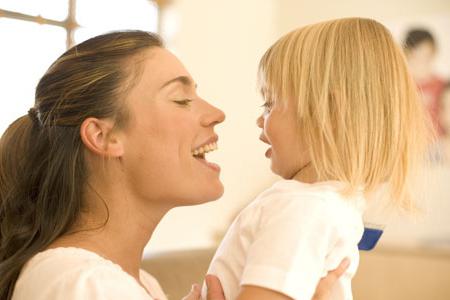
There are a lot of short songs for kids. All of them are aimed at the development of crumbs. Children can be trained according to Zheleznova’s method from eight months. In each song, words and sounds are sung clearly, understandably, and legibly. Therefore, it will be easy for kids to repeat first the words and then the actions.
Logorhythmics Zheleznova provides classes not only with one child, but also with a group of children. They can be carried out in speech therapy groups, medical centers, clinics. The more children participate in the activities, the more interesting it will be.
Logorhythmics: exercises
Each lesson is aimed at the development of children. The child improves speech and learns to navigate in space. Logorhythmics for kids is comprehensive classes, which includes music, movement and rhythm. Before practicing this method, you need to study the types of exercises:
- Intonation and correction pronunciation.
- Phonetic (auditory) perception.
- Articulation exercise.
- Songs without musical accompaniment.
- Games on a musical instrument.
- Adjustment of muscle tone.
- Exercises that form a landmark in space.
![]()
Consistency rules are followed in all classes. First, words or rhymes are studied. Then the activity gradually becomes more difficult. After the children have mastered the material well, it is necessary to consolidate it. To do this, you should pay attention to logarithmics every day, starting from 10 minutes. Every day the time increases slightly.
Logorhythmic games
There are many entertaining and educational techniques for children. We found out that there is another one - logarithmics for kids. According to this method, it is necessary to practice exclusively in a playful way.
We invite you to familiarize yourself with several small games for the little ones:
1. The wind is blowing very, very strongly(we wave our palms towards ourselves).
The tree swayed(we raised our hands up and waved them, helping with our whole body).
The wind blows less and less(we slowly lower our hands).
The tree grows more and more(raise your arms and stretch on your toes).
2. Knock knock(they knocked on the table with their fist).
Who's there?(claps hands).
Can I visit you?(you open the doors for fun).
Come in, we welcome guests(Clapping hands three times).
3. We drove and drove(pretend to be riding a horse).
We came to visit you(knock on the door as if it were something).
We're tired(sat down on a chair).
Now we'll rest and go for a walk again(they marched merrily).
First learn all these poems and many others without musical accompaniment. Only when children know them well, try playing instruments. Remember, first you need to interest the baby, and only then teach. After all, if you force him, he will flatly refuse to study.
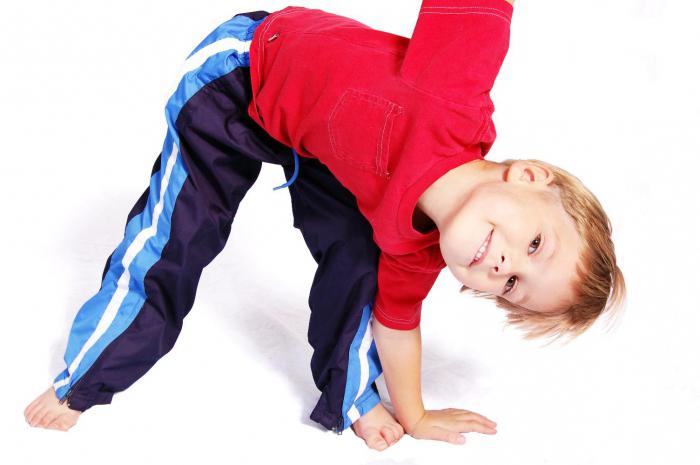
Logorhythmics classes are very important for every child. It's fun and interesting. It is necessary to start with a more energetic song, then the baby will quickly want to play a new game with you.
Club of Passionate Mothers
Logorhythmics (speech therapy rhythmics)– these are games and exercises aimed at learning movements to certain poems or music. How are logarithmic exercises useful?
- Promote replenishment vocabulary
- Strengthens the child's muscles
- The correct tempo of speech and breathing is formed
- Develops attention and memory
- Develops a sense of musical tempo
In this article we will discuss when to start practicing logorhythmics and what kind of logorhythmic exercises should be included in your lessons with your child.
- Exercise no more than 2-3 times a week for 10-15 minutes.
- Do not force your child to exercise and offer exercises in a playful way as much as possible. Use your child’s favorite toys, songs and pictures.
- All logorhythmic exercises require repeated repetition. Only in this case can the desired effect be achieved.
Do not treat these activities as a teaching and learning process. Remember that the most important thing is to have fun with your child, and the benefits and results will not take long to arrive.
People have long noticed that movement has a healing effect. Tired - take a walk in the park! Nerves fail - run! If you have no energy, do some exercises! And if the movement is accompanied by speech or singing, the effect will be enhanced many times over. How logorhythmics is useful for children and how speech therapists use this discovery, read the article by our expert on speech development, Anna Makovey.
Let's figure out what it is. The name “logorhythmics” in its expanded form sounds like “speech therapy rhythmics,” that is, the elimination of speech deficiencies with the help of movements. Simply put, any exercise that combines speech and rhythmic movements is logorhythmics!
Why do we need logorhythmics?
These classes are very useful for physical, intellectual, speech and emotional development baby. Muscles are trained and strengthened, a sense of balance, agility, strength, endurance, the ability to quickly switch from one type of activity to another, coordination of movements, and beautiful posture are developed.
The benefits for speech and general development are also great! Correct speech breathing develops, an understanding of tempo, rhythm, expressiveness of music, movements and speech is formed, the ability to transform and move expressively in accordance with the chosen image, thereby demonstrating and developing one’s creative abilities.
With the help of logorhythmics classes, you can calm down an overly active child or encourage a slow one. That's how magical she is!
At what age can logorhythmics classes be taught?
There are no age restrictions for such activities. You can carry them out even from birth! If you like to rhythmically walk with a baby (maybe with a baby in your arms!) around the room and recite poetry - you are conducting a logorhythmic lesson! You sing a lullaby at night and rhythmically rock the baby in your arms - and this is logorhythmics!
Until the child speaks on his own, you can ask the baby to clap his hands (play “Okay, okay!”) or stomp in time with the words:
Walking along the path, green boots,
Walking along the path, red boots,
Help the baby if he cannot do it on his own. Take it in your arms and perform a song-dance, clap a simple rhythm with your child’s palm or tap it on the keys of a metallophone (take the child’s hand in yours):
Drip-drip! Who's there?
Drip-drip! What's there?
Take a walk on the roof!
By the way, many children’s logorhythmics can be classified as finger games, which we use from infancy. For example, among the favorite games of Galka-Igralka there is a suitable one - “



